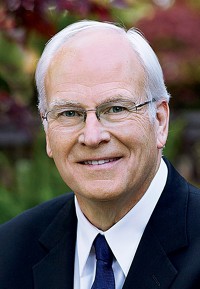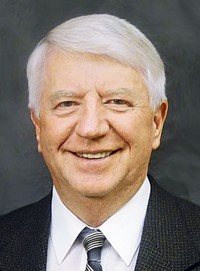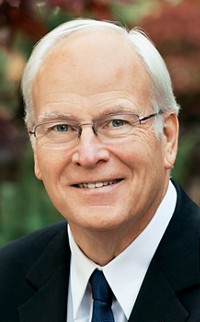Advertisement
Grab your lab coat. Let's get started
Welcome!
Welcome!
Create an account below to get 6 C&EN articles per month, receive newsletters and more - all free.
It seems this is your first time logging in online. Please enter the following information to continue.
As an ACS member you automatically get access to this site. All we need is few more details to create your reading experience.
Not you? Sign in with a different account.
Not you? Sign in with a different account.
ERROR 1
ERROR 1
ERROR 2
ERROR 2
ERROR 2
ERROR 2
ERROR 2
Password and Confirm password must match.
If you have an ACS member number, please enter it here so we can link this account to your membership. (optional)
ERROR 2
ACS values your privacy. By submitting your information, you are gaining access to C&EN and subscribing to our weekly newsletter. We use the information you provide to make your reading experience better, and we will never sell your data to third party members.
Environment
Meetings & Expositions
An ACS national meeting takes about 10 years to plan, and one may be coming to a city near you
by Rachel Petkewich
June 4, 2007
| A version of this story appeared in
Volume 85, Issue 23

Forty-three people registered for the first American Chemical Society national meeting, which was held in Newport, R.I., on Aug. 6–7, 1890. That year, ACS had 238 members. This past March, more than 14,000 people attended the ACS national meeting in Chicago, and this year, ACS boasts more than 160,000 members.
Committee On Meetings & Expositions At A Glance
Chair
Willem Leenstra, University of Vermont
Committee Website
Membership
19 full members, 12 associates, five committee liaisons, and one ACS staff liaison
Classification
Standing Committee of the Council
Subcommittees
Expositions, Finance, Meeting Logistics, Regional Meetings, Site Selection, Technical Programming
Inception
Established by ACS Council in 1971
In 1971, to deal with the rising number of participants at national and regional meetings, the ACS Council created the Committee on Meetings & Expositions (M&E) to oversee big-picture logistics and long-term planning. For example, in Chicago, M&E announced approved dates and sites for 2017.
M&E's goal of organizing outstanding regional and national meetings is straightforward, but a large number of specific tasks need to be accomplished. Adding thematic programming at recent national meetings has been a big accomplishment, says M&E Chair Willem Leenstra, who is a chemistry professor at the University of Vermont.
M&E operates through six subcommittees. Most of the subcommittees get significant assistance from ACS staff in the departments of Meetings & Expositions, Divisional Advancement, and Conference Management & Vendor Relations.
The Site Selection Subcommittee focuses on finding places and dates to hold national meetings. Not every city has an exposition hall of appropriate size and enough meeting space and hotel rooms, Leenstra says.
Some cities are just more popular than others when it comes to ACS national meetings. For example, at the Atlanta meeting last year, the Site Selection Subcommittee presented the results of a study that showed Boston, San Diego, and San Francisco are historically the three locations with the best-attended meetings. As a result, M&E decided to approve a rotating schedule. Starting in 2016, one national meeting will be held in one of those cities every year.
The schedule for upcoming national meetings will also include tried-and-true cities such as Washington, D.C., as well as "experimental cities." These cities either have never held an ACS meeting or haven't held one in a long time, Leenstra says. For example, after visits and evaluations by subcommittee members, Indianapolis is scheduled for the fall meeting in 2013, and Denver, for the spring meeting in 2015.
The subcommittee also looks at the timing of meetings. And although it's impossible to find a perfect time for every attendee, subcommittee members try to take as many constraints into consideration as possible, Leenstra says. For example, spring meetings are generally planned to avoid coinciding with religious observances.
Then there's "the show," as the Expositions Subcommittee refers to the exposition in which companies display everything from books to spectroscopy equipment to glassware in the expo hall. The subcommittee addresses problems that vendors encounter at national meetings, compares the pricing structure for booths with other professional societies' expos, and reviews attendance and other statistics.
The Finance Subcommittee recommends the attendee registration fee structures for a national meeting to the full committee. The ACS Board of Directors makes the final decision.
M&E collaborates with the Divisional Activities Committee (DAC) to coordinate ACS presidential events and thematic and technical programming. Whereas DAC organizes symposia, "M&E's Technical Programming Subcommittee ensures that the symposia are spread out evenly over the entire meeting," Leenstra says. For example, M&E makes sure all programming from a particular division isn't concentrated on Monday and Tuesday.
The Meeting Logistics Subcommittee assesses some of the finer details of programming. For example, subcommittee members have started collecting data at national meetings about absent speakers or blank spaces during poster sessions.
Many ACS members attend regional meetings. All oversight of these meetings is handled by the Regional Meetings Subcommittee. This year, subcommittee members will take a more active role in keeping in touch with their assigned region to ensure successful meetings and regional activities, Leenstra says.
Volunteers are essential for successful meeting planning. Leenstra suggests that interested ACS members get involved with planning regional meetings. Keep in mind that each of the 10 regional meetings last year drew on average more than 10 times more people than that first national meeting in Rhode Island.





Join the conversation
Contact the reporter
Submit a Letter to the Editor for publication
Engage with us on Twitter